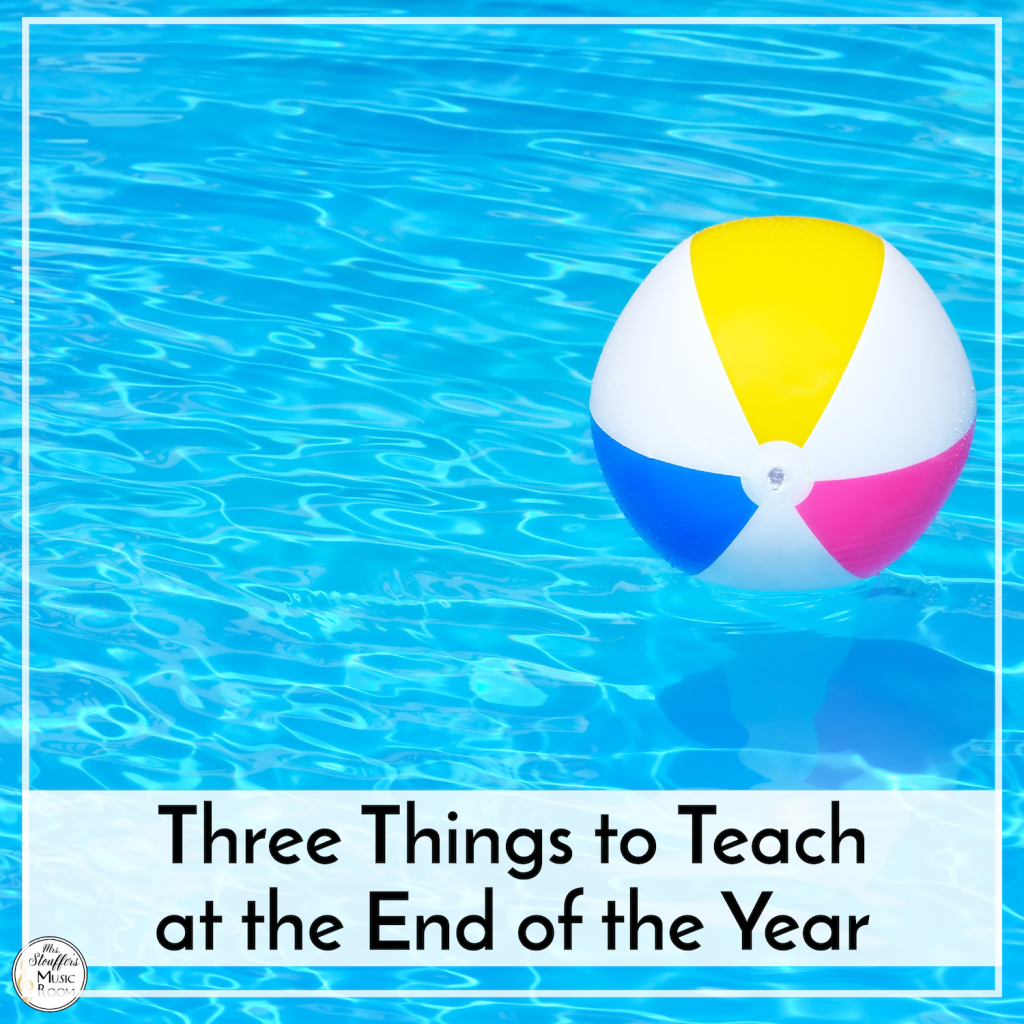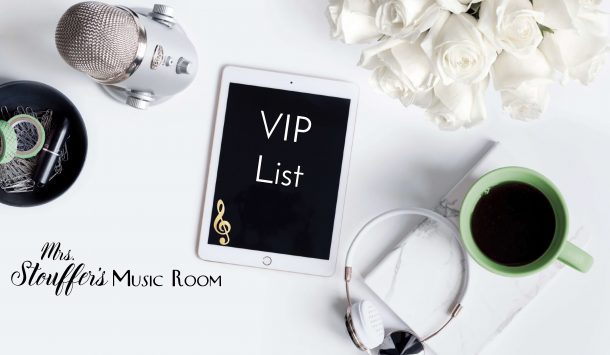Music is for all. So what can we do to make everyone really feel welcome in our room? Here are some inclusionary practices to start this year.

Consider Homework and Practicing
Practice logs are a thing. You know what I mean. Before you start taking points off for students who aren’t practicing at home or doing homework, consider what might be going on in their life at home. Are they responsible for watching younger siblings while parents are doing something else? Are they at daycare until 6pm? Do they have home support? Is there a baby at home and parents don’t want the recorder squeaking while the baby is trying to sleep? What about basic necessities like food, lights, heat, and water? If a student’s home life is struggling, focusing on homework or practicing is probably not even on their radar.
Yes, we want our students to do their best and we do know practicing ca be important in that, but consider offering alternatives for students. See if you an have a ‘practice club’ that meets for 5-10 minutes at lunch once a week so students can come in for extra help or practice with a friend. Offer alternatives to out loud practice such as learning how to work through fingerings silently. Make sure if you are assigning homework, it is short, manageable, and really necessary.
Clip Charts
We’ve talked about clip charts before but do we really need to display who’s a “bad kid” in front of the rest of the class? If those students are always on red, they start to internalize that they are a “bad kid” or a problem. It’s just “who they are”. Don’t perpetuate that.
Sit That One Out
There are times that students can’t participate. Jehovahs Witness students and holidays. Students who might not be able to do the activity due to a physical limitation. ALL Christmas songs in December. But if we constantly exclude these students and they “sit and watch” or have some other activity to do, what are we saying? Consider how you would feel as that student. There are adaptive resources for recorders and ukuleles. There are ways to adapt movement. We don’t have to (and shouldn’t) sing all Christmas songs in December.
Parents
Students don’t always live with mom and dad. Grandma or foster parents. Maybe they are with an older adult sibling. Maybe they have a parent that died. In any of these situations, saying “your adults” is much more inclusionary. Or “your grown-ups”. This should go for Mother’s Day, Father’s Day and Grandparent’s Day events as well. There are lots of ways to rename events so students can still feel part of the celebration..
Picking Groups and Partners
If you have odd numbers or student that always seems to be the one that kids don’t want to work with, stop adding to the exclusion. Assign groups or partners. Pre-assign students to a color group or have them draw every quarter and assign groups via “instrument family” such as the brass group, the woodwind group, etc. For partners, I love passing out silicone wristbands when students come in the door. They have to find their partner with the same color and no trading. If your school uses a number system (each student has a classroom number), post the numbers and assign groups and partners that way and it can go for the entire school without extra work.
Heritage Months
Yes, celebrate them. In fact, please do. Call attention to marginalized voices. But include those voices all year round. They aren’t ‘others’ to be celebrated only one month a year.
Uniforms
If you have a choir or a performing group, or even for concerts, make the uniform as accessible as possible. Jeans with a brightly colored shirt. Or provide the uniform for them. Don’t pay to play or make sure that students who can’t afford the shirt can either get one from you to borrow and have a “donate a shirt” option on the order form for other families. This way you can provide a shirt for every student. Don’t get picky with shoes. Some students legitimately may only have one pair. Even more to think about, make your clothing requirements gender neutral such as black on bottom, white on top instead of specifying for girls and boys. Set dress rules for all the students.
Students with Out of the Ordinary Behaviors
Falling asleep in your class? Upset and cries at everything? It might not be something the students can help. Always consider there may be something going on in their home life, especially if the behavior is new. If they are having a day, help them out. If it’s a repeat behavior, definitely do some digging, get with the classroom teacher or your admin, and find out the necessary info.
Get To Know You
Unless you switch students this time of year this might not apply now but make sure you know what you need to know about students. Who they live with, their preferred name, pronouns, and important things like medical info, IEPs, and things like that. Some of this you can get from the students, some you get from documents and classroom teachers.
Don’t Boys vs Girls
There are so many other ways to make pairs, split the class up, or call on students. Even if you live somewhere that you can’t use preferred pronouns or names, you can help those students feel more themselves by not using gender to do basic classroom stuff.
Bathroom
There are so many reasons, but if you didn’t read this post, all you need to know is when they ask, they go. But on the other end, saying no except to certain students might bring to light private medical issues they don’t want to discuss, be stressful for young girls who have started monthly cycles, and be anxiety driving for others. Check out this post to read more about Bathroom Issues.
Call Home!
Don’t just call home for negative behaviors or problems. Some students and their parents legitimately never get to have a good phone call. Start making a point to call or send a quick email for everyone once a semester. It doesn’t have to be long and it will make a student’s day! Write out some templates you can copy/paste, or if you want to go a non-tech and super fast route these free Student Notes Home would be great. Pre-print and cut and all you have to do is add a name.

Stimming and Other Regulation Behaviors and Student Comfort
If it’s non-disruptive and it helps a student regulate themselves, don’t insist their hands are still. If a student prefers to sit like a mermaid or with their knees pulled up to their chest, let them unless it’s necessary to sit criss-cross for the activity. As long as hands and feet are to themselves, not in the way, and not making audible noises that disrupt learning, let it go.
Attendance
If students can’t drive, it’s not their fault they aren’t there. I don’t care if it’s baseball, mom had to work, or whatever other reason, their grade shouldn’t be changed because they missed the performance or activity. The student in question may have absolutely wanted to be there but had no way of getting there. Let them make it up, perform it with a friend, or find another way to get that grade.
Supplies
Yes, it’s absolute ghost-p00p that teachers buy stuff for their own classrooms, however, if a student doesn’t have a pencil, remember that they 1, don’t have a job, and 2, can’t help that an adult won’t get them one. If they have them and constantly forget them in the classroom, that’s a different issues, but definitely consider the situation if they don’t have/can’t buy something.
If pencils are a huge issue, ask classroom teachers to set aside 1 pencil from each student as part of their “bring to music” routine and someone brings down a ziplock of pencils that are sharp and ready to go for music class each week so you don’t have to spend all your time sharpening and students don’t have to individually grab one.
Tell It Alls
If students come in and HAVE to tell you something, set a timer and let them tell you something. Or give the class 3 minutes to tell you about something they did. Quick hits, no long stories so everyone can get a chance. Maybe no one is giving them that time and they really need it.
Offer Choices
Especially for neurodivergent students, but for all your kids, sometimes offering a choice between two activities you are going to do about which will be first can help regulation, and empowerment. So many decisions are made for students that letting them have a voice can be really important. Playing something with instruments but it doesn’t really matter which one? Let them pick between egg shakers and rhythm sticks. Creating a body percussion? Let students choose between two sounds. Autonomy and empowerment.
Calm Down Corner
In an overstimulating world, especially younger students and those that had a few years of virtual schooling, kids might have a hard time regulating. Make a calm down corner and teach them how to use it. Check out this post for a few ideas on a Peace Table which can be used for calm down and also as a place to help students work out disagreements.
I hope this gives you some ideas!







I love your ideas and the way you do music! I was a pre-K and then kindergarten teacher for years and now I’m back teaching music and need a little help! LOL!!
Thanks! I hope this is helpful! Let me know if I can help you out at all!